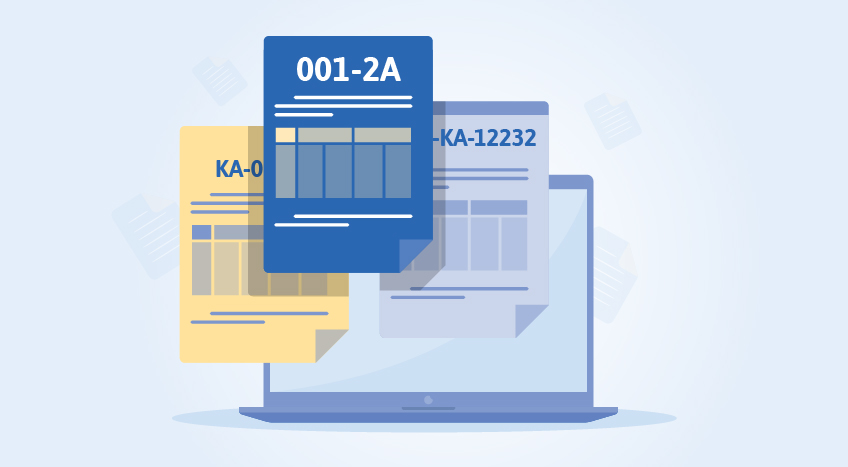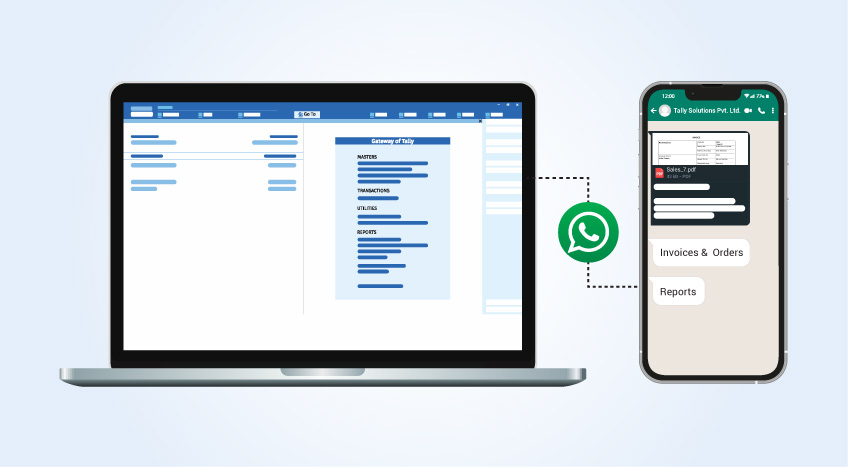SHARE
Tally Solutions | Updated on: November 8, 2022
- Financial statement: definition and uses
- What are financial statements?
- Financial statement components
- Uses of financial statements
- Financial statement users
- Financial statement limitations
- Differences and similarities between financial statements and financial reports
- Easy and accurate financial statements
One of the most important annual processes for an accountant is the release of a company’s financial statements. The company's financial statements are so important because they summarize the financial activities and position of a company for a time period, usually the financial year. A potential investor would assess a company not merely by its reputation but also by its financial statements. For a shareholder or stakeholder in a business, the financial reports tell how the company is performing. The owners or the board of directors can also assess how well a company is being run by looking at its financial statements.
|
Impact Of Automation on Accounting & Business Software Industry |
Financial statement: definition and uses
Financial statements summarize an organization's financial position, cash flows, and overall financial activity for the time period concerned. These statements give the reader the necessary information on which to base their company's financial analysis on. The most common financial statements are the income statement, balance sheet, and cash flow statement. The income statement tells the reader how much money the company has made versus how much was spent. The cash flow statements trace the flow of money through the organization. The balance sheet is a report that details the company's assets, liabilities, and equity. A study of all three of them gives a complete picture of the company’s financial status.
What are financial statements?
The financial statements are summaries of the company’s financial activities and performance. While a company website or brochure may tell you about the company’s products, services, and activities, the financial statements are a complete assessment of the company's financial aspect. Financial statements are extracted, calculated, and summarized from the financial accounting records of the company.
So, if you want to know how profitable a company was in a financial year, you would study the income and expense statement for that year. The cash flow statement goes deeper into the actual cash flows in the company and tells you how well, and consistently the company has been able to generate cash to meet its obligations. However, a company is more than how much cash it earns and pays out. The balance sheet details the assets and liabilities that the company has. So, even if the income statement shows that the company made more money than it spent, the balance sheet will tell you if it achieved this while incurring more liabilities than its assets.
Financial statement components
The components of financial statements are the individual statements that give a complete picture of a company’s financials. Here are some of the critical components of financial statement:
Balance sheet: The balance sheet is one of the most useful financial statements for a good reason. It is the financial statement that has the most comprehensive information about the company’s financials in the given time period. If a person or institution wants an overall picture of your company’s financials, they would usually ask for the balance sheet.
A balance sheet gives information about the company's assets, liabilities, and equity. The value of the equity is simple arrived at using the following formula:
Equity = Assets – Liabilities
The balance sheet is divided into two main components; assets and liabilities. The assets on the balance sheet are the current and the long-term assets. The liabilities are the current as well as long-term liabilities.
You can use the balance sheet to determine the liquidity of the company. More liquidity indicates the ability to meet obligations and invest in growth without accessing external debt. You can analyze the balance sheet to see how much debt the company has compared to its assets. The balance sheet helps calculate how much value the shareholders have invested in the company (equity). The more value the business offers to investors, the more attractive it will be to new investments and financing.
Income statement: One of the essential statements included in the company’s financial statements is the income statement, also called the profit and loss statement. It can be generated for the entire financial year or smaller specific periods. By comparing the income and expenses of the company, you can quickly determine if there has been a net profit or a net loss. This information is printed on the bottom line of the statement.
The formula for net profit (or loss) is:
Net Profit = (Revenue – COGS) – Expenses
COGS is the Cost Of Goods Sold.
The most important details that one can obtain from the income statement are:
- Revenue
- Cost of goods sold (COGS)
- Gross profit
- Operating expenses
- Total expenses
- Net income before taxes
- Income taxes
- Interest
- Net profit or net loss
The income statement is helpful to compare the different products and services of the company to determine the ones that are the most profitable. The company can also assess the expenses and trim the unnecessary ones. The difference between income and expenses shows how much cash is left over. The company can use this statement to create a budget where the income and expenses are optimized to generate higher profits. Potential investors assess the income statement to determine just how profitable the company has been in that period.
Statement of changes in equity: Investors are interested in knowing how much the value of their equity has changed in the given period. The changes in the value of equity from the beginning to the end of the time period define the changes in the equity value. The components that affect the changes in equity are capital stock, retained earnings, additional paid-in capital, and other income.
Cash flow statement: The other financial statements give you an overview of the company's finances. But, the cash flow statement tells you how and when the cash has come in and gone out of the company. It can be prepared daily, weekly, monthly, quarterly, and annually.
The cash flow statement states the starting cash balance for the time period, the transactions that affected the balance in the time period, and the closing balance. The transactions are summarized as operational, financing, and investments.
The formula for the ending balance is:
End cash balance = Operations + Investments + Financing
A cash flow statement helps assess the cash flows of the business and decide on whether the business needs more cash infused into it. It also highlights issues and delays in accounts receivable if any.
Uses of financial statements
Decision-making: The financial statements present the actual on-the-ground status of the company’s finances. It helps management make data-backed decisions. Smart decisions are essential to guide the business to profitability, growth, and success.. When there is a positive change in the financials, the company knows that they are doing something right. The statements may also highlight issues that need to be addressed by the company.
Financial analysis: Financial statements give the overall picture of a company’s financial status. They can be analyzed to determine the company’s capacity to generate cash and pay its liabilities. The profit/loss and cash flows of the company can be studied. Investors analyze financial statements to determine the value of the shareholder’s equity in the company. They are also released to the shareholders and other stakeholders annually to inform them of the company’s financial position.
Giving capital/loans: Both investors and financial institutions assess a company's risk factors and financial status before putting money into it. This is achieved by studying the company’s financial statements and arriving at a judgment on how risky the investment or loan would be. Some financial institutions may ask for audited financial reports.
Financial statement users
The financial statements are usually released after being audited. The most common users of these financial statements are:
Investors and shareholders: The company stakeholders are informed of the company’s financial status through the financial statements. They will be able to analyze how the company has performed and the return on investment they are getting. Financial statements are also required to attract investments in the company.
Lenders: Lenders and financial institutions usually require audited financial reports to determine if they can sanction a loan to the company. They may also ask for additional information, such as the projected financial statements.
Vendors: Vendors and suppliers who are giving a company a credit period would check the financial statements for the repayment capacity of the company in the short term. Unlike lenders who assess the company for long-term repayment capacity, the vendors are interested in the short-term repayment capacity of the company.
Customers: When a company bids or negotiates for a long-term supply contract, their customer would want to know how reliable and stable the company is. The financial statements of the company are helpful for this analysis.
Management: The management of a company bases its major decisions on the financial statements and strategies to improve its operations to improve the metrics on its statements. The financial statements also reflect the results of their previous decisions.
Employees: A person signing up for a job would want their employer to be reliable and financially sound. Some employers may study the financial statements of the company to choose the most secure company to work for.
Government and authorities: When a government agency requires details of a company’s finances, financial statements must be submitted. Some authorities may additionally require audited statements.
Analysts: Investment and business analysts need to give opinions on a company to their clients. They study the financial reports to advise whether a company is worthy.
Competitors: It is not unheard of for a competitor to analyze its financial statements. This gives them information that they would need to adjust their business strategy accordingly.
Credit rating agencies: The company's financial statements give rating agencies the information they need to assess a company's creditworthiness.
General public: when any member of the general public researches a company, they will also review the financial statements.
Worker’s unions: The human resources of a company are interested in the ability of the company to pay its workers and all their dues. They study the financial reports regularly to spot any signs of trouble that could affect payouts to the staff.
Financial statement limitations
Financial statements are the most obvious source of information for assessing a company, however, they do have some limitations. The first limitation is that the inferences drawn from the reports are subject to interpretation. The conclusions drawn by reading financial statements can be variable depending on who the analysts are.
When investors look at a company’s statements, the priorities of each investor is unique. Some may prefer that the company have a steady cash flow, while others may want to avoid a company carrying a lot of debt. Another disadvantage is that reading the financial statements for a specific year or time period does not give the complete picture. The company is best assessed by studying the financial reports for consecutive periods to get an accurate picture.
The report does not inform the reader of the challenges and trends that the particular industry or region faces. Suppose an analyst compares the reports of competitors in the same field or the company trends in the same geography. In that case, they may get a more realistic understanding of the company’s performance in relation to its peers.
Differences and similarities between financial statements and financial reports
Some of the main differences between financial reports and financial statements are:
Scope: A financial report contains the company’s financial statements and other information. But, each financial statement addresses only that specific aspect of the company. A comprehensive financial report has a more extensive scope than a financial statement. It can have multiple versions, long and short.
Format and calculations: The format and preparation of a financial statement is strictly governed by accounting best practices and local regulations. There is no room for customization or flexibility in their preparation. A financial report contains the company’s financial statements, but the other sections of the report can be formatted as per the company’s wishes.
Length: Financial reports are specific in format, and they are of a limited length. A financial report can be made as long or short as required. A company can go into great detail about every aspect of its finances and use charts, pictures, and graphics to illustrate its point. This level of creativity is not allowed in a financial statement.
Easy and accurate financial statements
Financial statements must be prepared according to accounting rules and government regulations. Preparing financial statements manually is a notoriously time-consuming and stressful task. However, with the use of accounting software, you can generate accounting reports instantly. You can generate a company’s trial balance regularly to ensure that no mistakes or problems are likely to make generating a financial statement difficult. TallyPrime is designed to summarize your entire financial transactions for the year into properly formatted and accurately calculated reports. The statements are generated adhering to accounting principles but are customizable to suit regional variations of laws and requirements.
Read More:
Latest Blogs

5 Must Have Reports Insights in Your Dashboard

Import Data from Excel to TallyPrime

All-New Simplified & Powerful Report Filters in TallyPrime

TallyPrime’s Flexible Voucher Numbering Capabilities for Accurate Recordkeeping





